
- contact@comarketers.com
- +31 6 5251 8662
Based on our experience growing B2B companies across Europe, we uncovered “The Way to Grow in B2B”. We translated it into a framework called The Blueprint, a battle-tested approach to build a predictable opportunity pipeline. Discover its 3 stages and 10 building blocks that cover all bases to accelerate growth.

Have a compelling value proposition that resonates with your target customers, and that sets you apart from competition. Translated into a consistent message across the website and in sales collateral.
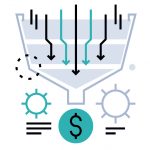
Get qualified leads through a set of campaigns that guide ideal buyers across their journey. Reach them where they are with the content that helps solve their problem and purchase your product.

Build a scalable infrastructure consisting of a full MarTech stack, expandable team structure and standardized processes to grow at scale in a repeatable manner to build a solid market position.
Each stage of growth has its own challenges and opportunities. Each has different needs, requiring its own marketing efforts. The Blueprint emphasises the most important pillars of growth for the stage the company is in. It consists of 10 building blocks that guarantee we cover all bases. Each of the Blueprint’s building blocks is backed by the best models, tools and templates to execute upon.
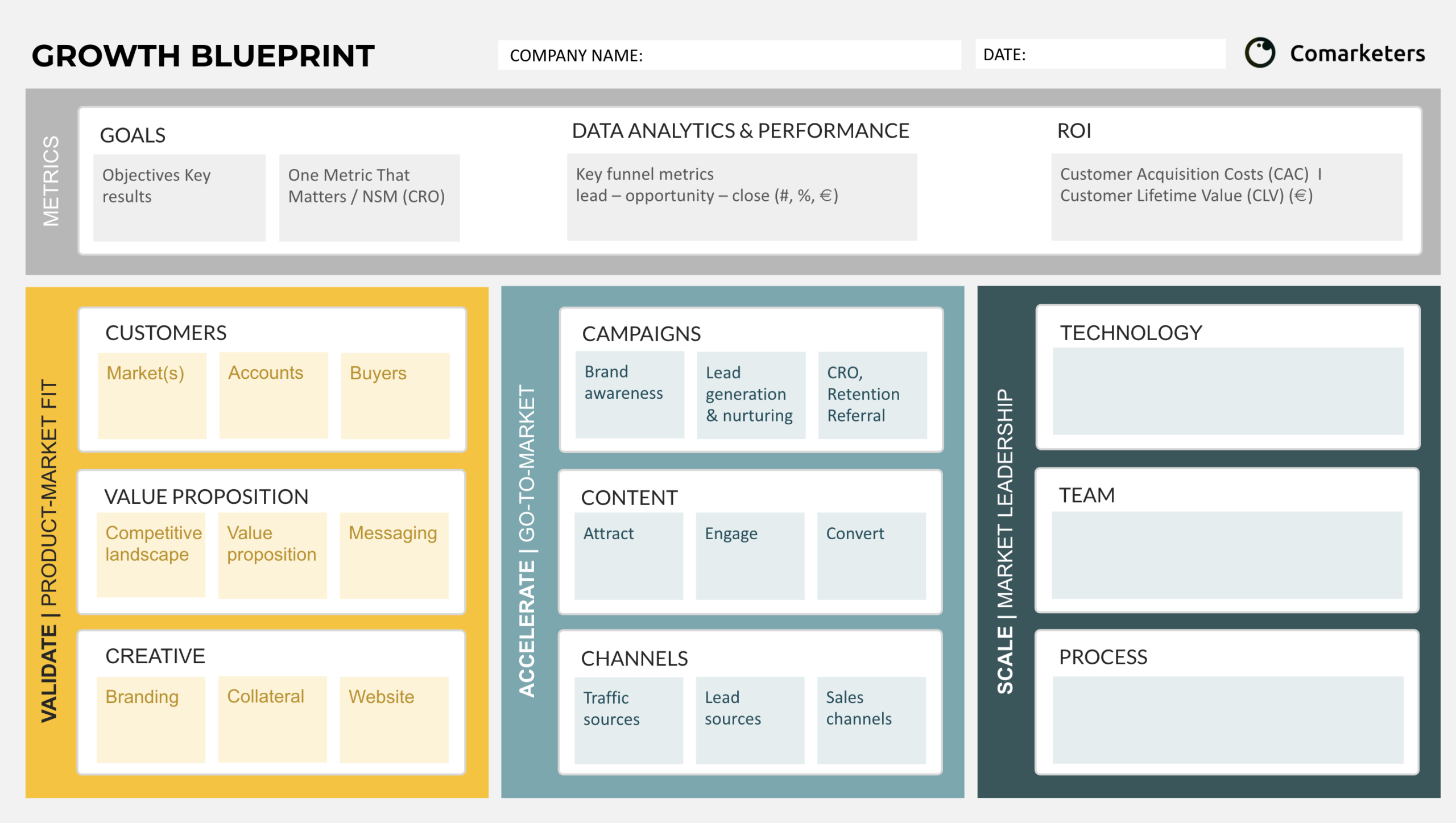
Build a data-driven engine from end-to-end, to allocate resources and budget to best performing efforts. Setup performance marketing to build, measure and learn.
 The growth of business and companies are often measured against Objectives and Key results (OKR) and a set of key metrics. OKR is a goal setting and management framework to align all teams around a clear vision and a common measurable outcome. Key metrics are spearheaded by a north star metric that captures customer value for sustainable growth.
The growth of business and companies are often measured against Objectives and Key results (OKR) and a set of key metrics. OKR is a goal setting and management framework to align all teams around a clear vision and a common measurable outcome. Key metrics are spearheaded by a north star metric that captures customer value for sustainable growth.
 The key funnel metric framework is a forecast from lead to close to growth for goal setting. The conversion rates are validated during the stages of growth to build a predictable pipeline. Breakdown by customer size and lead source, by year/quarter/month, for segmentation and YOY growth.
The key funnel metric framework is a forecast from lead to close to growth for goal setting. The conversion rates are validated during the stages of growth to build a predictable pipeline. Breakdown by customer size and lead source, by year/quarter/month, for segmentation and YOY growth.
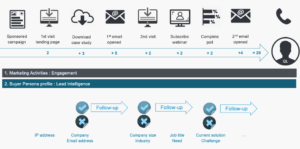 Customer data and tracking of interactions with (potential) customers. Identifying all touchpoints in the customer buying process with multi-attribution allows to understand the combination of events that have lead to conversion.
Customer data and tracking of interactions with (potential) customers. Identifying all touchpoints in the customer buying process with multi-attribution allows to understand the combination of events that have lead to conversion.
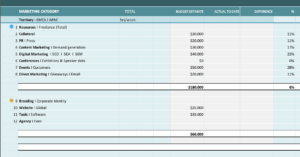 Combining key funnel metrics and growth tactics in an overall marketing budget will sum up customer acquisition costs (CAC). Define customer lifetime value (CLV) to calculate return on investment (ROI) of all marketing efforts accelerating growth.
Combining key funnel metrics and growth tactics in an overall marketing budget will sum up customer acquisition costs (CAC). Define customer lifetime value (CLV) to calculate return on investment (ROI) of all marketing efforts accelerating growth.
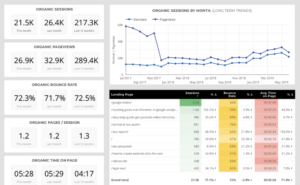 An integrated online marketing dashboard keeps track of all growth metrics. The outcome of key initiatives measured against the Objectives and Key results set, enables to build a customer pipeline in a repeatable manner.
An integrated online marketing dashboard keeps track of all growth metrics. The outcome of key initiatives measured against the Objectives and Key results set, enables to build a customer pipeline in a repeatable manner.
The ones who know their customers best, are the ones who win. Discover viable markets, prioritize accounts and understand the buyer and their journey to address their needs.
 Define market segmentation criteria to define market segments. Compare segments on market size, ease of entry, competition and use case attractiveness to choose the beachhead market(s) for growth.
Define market segmentation criteria to define market segments. Compare segments on market size, ease of entry, competition and use case attractiveness to choose the beachhead market(s) for growth.
 Based on a list of existing customers proving to be a best-fit, identify the ideal customer. Gather customer insights and complete the ideal customer profile. Calculate the total addressable and serviceable market to evaluate the attractiveness of the selected customer market upfront.
Based on a list of existing customers proving to be a best-fit, identify the ideal customer. Gather customer insights and complete the ideal customer profile. Calculate the total addressable and serviceable market to evaluate the attractiveness of the selected customer market upfront.
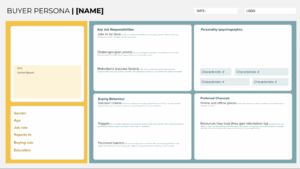 Having a detailed fictional profile that represents a target buyer segment helps you to bring the buyer to life and target it more accurately. Steer campaign, content and channel efforts, making the customer the center of all marketing efforts.
Having a detailed fictional profile that represents a target buyer segment helps you to bring the buyer to life and target it more accurately. Steer campaign, content and channel efforts, making the customer the center of all marketing efforts.
A comprehensive buyer research of the latest tools and techniques helps to get you a data-driven persona you can act upon.
Build your product messaging and competitive positioning. Go beyond products and services towards value delivered to the customer, testing multiple pricing strategies.
 A competitive audit reveals the main marketing activities and performance of companies serving the same target market and customers. It’s a full analysis of the scope of business, including traffic, SEO, content, social media and lead generation activities and results.
A competitive audit reveals the main marketing activities and performance of companies serving the same target market and customers. It’s a full analysis of the scope of business, including traffic, SEO, content, social media and lead generation activities and results.
Get insights to fill in the white opportunities competitors are missing. It’s a great start when you are validating your value proposition, or at the beginning of accelerating growth. It provides insights for your messaging, content, channel and campaign strategy.
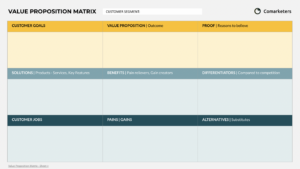 Clearly bringing across the value you offer to the customers you serve is key to grow your business. A winning value proposition is a compelling description of the solution you offer to solve your customers problems, with key features, benefits and differentiators that set you apart from competition. It puts the value you offer to customers first, with the proof points that will convince them.
Clearly bringing across the value you offer to the customers you serve is key to grow your business. A winning value proposition is a compelling description of the solution you offer to solve your customers problems, with key features, benefits and differentiators that set you apart from competition. It puts the value you offer to customers first, with the proof points that will convince them.
The messaging framework is a set of messages – terms, phrases, or statements – arranged hierarchically to convey the brands messaging priorities, its communication goals. It helps people across the organization to deliver consistent messages across all types of content.
Implementing your value proposition across all owned marketing and sales channels. How to speak with one voice with a compelling story to attract and win customers for life.
To have everyone consistent in their message about the product brand, a branding and messaging outline is a self-explanatory messaging package that clarifies who the company is targeting, with what value proposition, including proof, and ready to consume copy to use when talking about or publishing about the product brand.
The outline typically includes;
To strengthen the sales organization to consistently bring across a compelling message, sales collateral is essential. These are client-facing content assets around your product and service offering, summarize the customer value, key features and benefits of your offering from a customer point of view.
The most important key assets to enable sales include;
Transform your website from a company brochure into a growth engine. Have your website actually guiding buyers through their buyers journey building funnels and conversion paths that lead them to the ultimate goal; having solved their problem.
Build and manage lead and demand generation programs and account based marketing. How to optimize conversion and increase retention and referrals.
How to address the customers questions in all stages of the customer journey. Connect, interact and guide the customer through their discovery and decision phases.
What are the most effective channels to attract, engage and nurture customer relationships. Experiment with lead sources to allocate budget to best performing channels.
Overwhelmed by the endlessly growing number of tools, how to assemble, implement and fully utilize your marketing technology stack to build upon a scalable infrastructure.
How do you build, onboard and organize multidisciplinary growth marketing teams? Find people with the right set of talents, skills and attitude to enhance a growth culture.
How to get all the right processes in place to scale, setting up a systematic process. Meet OKR’s combining project management and agile working with a monthly/quarterly rhythm.
About 40% of the companies applying this framework manage to get a 10x growth.
Those who don’t? They mostly fail in stage 1. The far most common reason, is that there’s no demand for their product or service – they’re either not solving a customer problem or need, or their market is too small. Other reasons include the wrong timing, not having the right team, outcompeted, or pricing or cash issues.
We will share both stories. The inspiring examples of those who made it, and those who have not. Those who we supported, and those we’ve reviewed. To accelerate the learning curve for (personal) growth.
We’ve helped many B2B companies scale with growth marketing. Need an advice or want us to help? Get a free consultation.